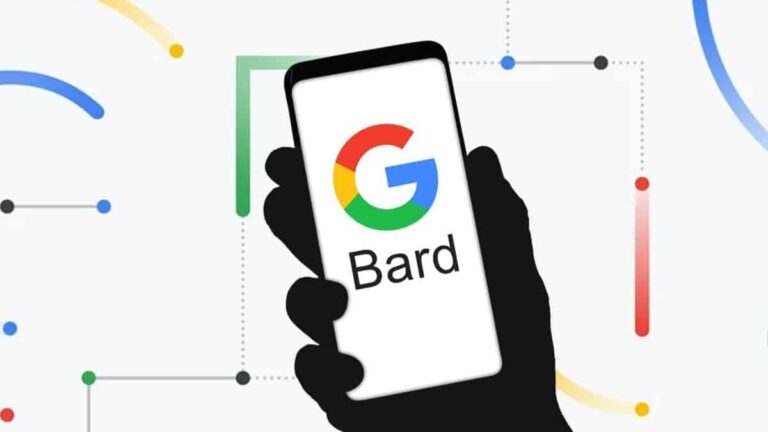Bard will revolutionize communication and AI by enhancing natural language processing capabilities and enabling more seamless and advanced interactions between machines and humans. In the ever-evolving landscape of communication and artificial intelligence, Bard emerges as a game-changer.
With its potential to revolutionize the way we interact with machines and enable more effective communication, Bard holds the key to a future where language processing becomes more seamless and advanced. As an advanced AI language model developed by OpenAI, Bard aims to bring about a paradigm shift in communication and AI technologies.
By leveraging its natural language processing capabilities, Bard has the potential to enhance human-like conversations with machines, opening up new possibilities in customer service, virtual assistants, and various other areas. Let’s explore how Bard is set to reshape the future of communication and AI by bridging gaps and enhancing human-machine interactions.

Credit: www.bcg.com
The Role Of Artificial Intelligence In Communication
The role of artificial intelligence (AI) in communication is revolutionizing the way we interact and conduct business. AI-powered communication tools are becoming increasingly prevalent and are expected to shape the future of communication and artificial intelligence. One of the key advancements in this field is the emergence of voice assistants and chatbots.
Voice assistants, such as Siri, Alexa, and Google Assistant, utilize AI algorithms to understand and respond to human voice commands. These virtual assistants can perform a variety of tasks, including answering inquiries, setting reminders, and even ordering products online.
Chatbots, on the other hand, are AI-powered conversational agents that simulate human-like interactions through text or voice. They can provide instant customer support, answer frequently asked questions, and assist with various online transactions.
Both voice assistants and chatbots are transforming how we communicate by enabling faster, more efficient, and personalized interactions. They have the potential to enhance customer service, streamline business processes, and improve overall user experiences.

Credit: www.bloomberg.com
Implications Of Ai In Communication
AI has the potential to revolutionize communication by enhancing efficiency and productivity. With the emergence of Bard, a powerful AI platform, the way we communicate is expected to change significantly. Businesses and individuals alike can benefit from this technology, as it enables them to streamline their communication processes and automate repetitive tasks.
One of the key implications of AI in communication is improved efficiency. Bard can analyze large volumes of data in real-time, allowing organizations to make data-driven decisions faster. This not only saves time but also improves productivity. By automating routine tasks, such as scheduling meetings or responding to emails, Bard frees up valuable time for individuals to focus on more strategic activities.
However, the adoption of AI in communication also raises concerns about potential job disruption. As AI technology becomes more advanced, certain tasks that were traditionally performed by humans may be automated. This could lead to the displacement of certain job roles. Therefore, it will be important for individuals to upskill and adapt to the changing demands of the job market.
The Future Of Communication With Ai
Artificial Intelligence (AI) is revolutionizing the world of communication, and one of the significant advancements is the introduction of Bard, an AI-powered platform. Bard is poised to impact the future of communication and AI in numerous ways, enabling real-time language translation and fostering emotionally intelligent communication.
Bard’s real-time language translation capabilities break down the language barrier, allowing individuals from different linguistic backgrounds to communicate seamlessly. This technology opens up new possibilities for international collaborations, business ventures, and global communication. With Bard, the need for human translators is reduced, making communication more efficient and cost-effective.
Moreover, Bard facilitates emotionally intelligent communication by analyzing tones and word choices in real-time conversations. It can detect and interpret emotions, allowing for more empathetic and effective communication. This fosters deeper connections and understanding among individuals and can be particularly useful in customer service, therapy, and interpersonal relationships.
In conclusion, Bard is a groundbreaking AI platform that will shape the future of communication and AI. Its real-time language translation and emotionally intelligent communication capabilities have the potential to revolutionize how we interact and collaborate.

Credit: www.mdpi.com
Frequently Asked Questions On How Will Bard Impact The Future Of Communication And Artificial Intelligence?
How Will Bard Revolutionize Communication And Ai?
Bard will revolutionize communication and AI by incorporating natural language processing and machine learning algorithms to enhance interactions between humans and AI systems. It enables seamless communication and provides personalized experiences, leading to improved efficiency and productivity.
What Are The Key Features Of Bard For Communication?
Bard offers advanced features such as speech recognition, language translation, sentiment analysis, and voice synthesis. It can understand and respond to user queries in real-time, providing accurate and contextually relevant information. These features enable efficient and effective communication between humans and AI systems.
How Does Bard Impact The Future Of Artificial Intelligence?
Bard transforms the future of artificial intelligence by bridging the gap between humans and machines through intuitive communication. It allows for better integration of AI into various industries, facilitates decision-making, enables automation, and improves overall AI system performance. Bard paves the way for smarter, more advanced AI systems in the future.
Conclusion
To summarize, Bard has the potential to revolutionize communication and artificial intelligence. Its advanced capabilities, such as natural language processing and context-awareness, will greatly enhance human-to-machine interactions. With its ability to understand and respond to human emotions, Bard offers a more personalized and engaging user experience.
As we look to the future, Bard’s impact on communication and AI will surely shape the way we interact with technology, bringing us closer to a more intuitive and intelligent digital world.






